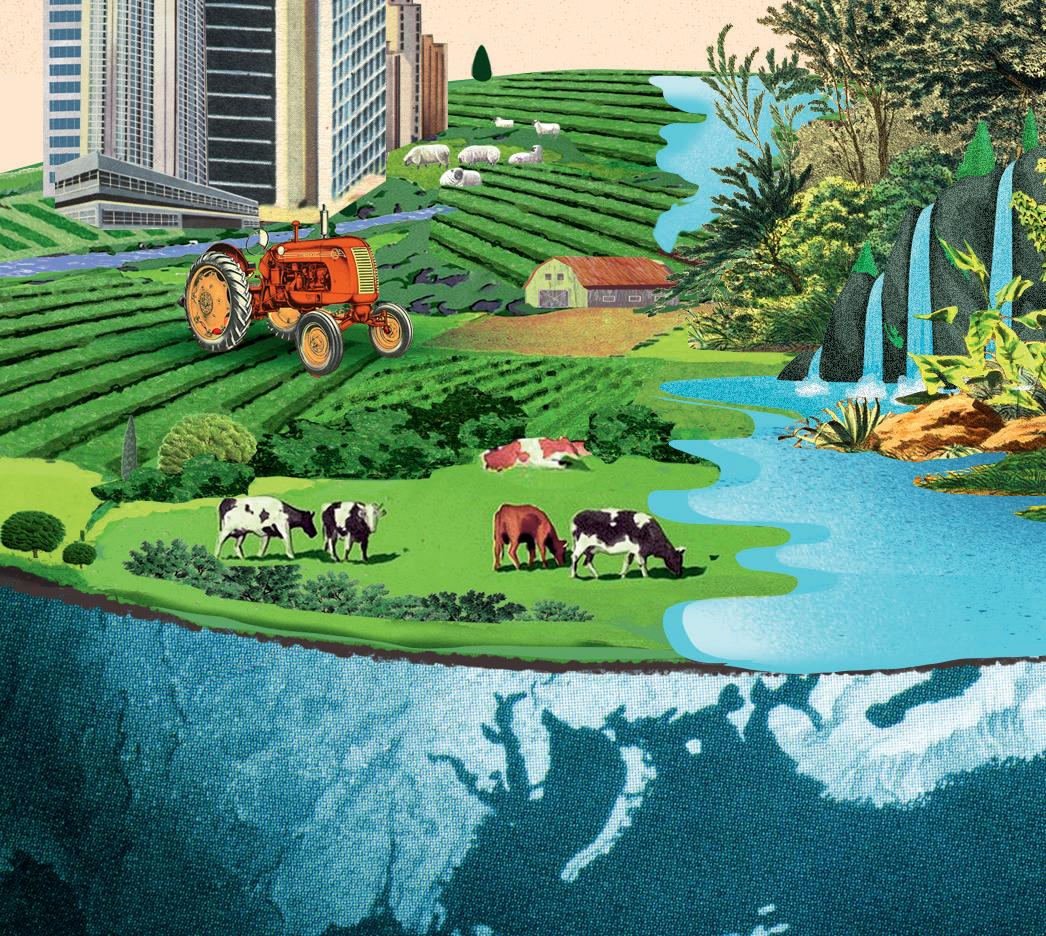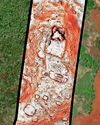
The story of the biodiversity crisis starts with a cold-case murder mystery that is tens of thousands of years old. When humans started spreading across the globe they discovered a world full of huge, mythical-sounding mammals called "megafauna", but by the end of the Pleistocene, one by one, these large animals had disappeared. There is no smoking gun and evidence from ancient crime scenes is - unsurprisingly patchy. But what investigators have learned suggests a prime suspect: humans.
Take the case of Genyornis, one of the world's heaviest birds, which was more than 2 metres tall and weighed in excess of 200kg. It lived in Australia until, along with many other megafauna, it went extinct 50,000 years ago. In North America, giant beavers weighing the same as a fridge and an armadillo-like creature called a glyptodon, which was the size of a small car, existed until about 12,000 years ago, when they, too, went extinct. In all, more than 178 species of the world's largest mammals are estimated to have been driven to extinction between 52,000 and 9,000BC.
These extinctions happened over hundreds or thousands of years, so it is unlikely people back then recognised it as a crisis. But, in some cases, the loss of these animals would have had landscape-scale impacts.
For a long time, the extinctions were thought to be linked to natural changes in the environment until palaeontologist Paul S Martin put forward his controversial "overkill hypothesis" in 1966. This stated that humans were responsible for the extinctions of megafauna, destroying the romantic vision of early humans living in harmony with nature.
By 10,000 years ago, when humans had spread across every continent except Antarctica, there were at most 10 million of them-so a lot of change had already been dished out by few people.
This story is from the {{IssueName}} edition of {{MagazineName}}.
Start your 7-day Magzter GOLD free trial to access thousands of curated premium stories, and 9,000+ magazines and newspapers.
Already a subscriber ? Sign In
This story is from the {{IssueName}} edition of {{MagazineName}}.
Start your 7-day Magzter GOLD free trial to access thousands of curated premium stories, and 9,000+ magazines and newspapers.
Already a subscriber? Sign In

Finn family murals
The optimism that runs through Finnish artist Tove Jansson's Moomin stories also appears in her public works, now on show in a Helsinki exhibition

I hoped Finland would be a progressive dream.I've had to think again Mike Watson
Oulu is five hours north from Helsinki by train and a good deal colder and darker each winter than the Finnish capital. From November to March its 220,000 residents are lucky to see daylight for a couple of hours a day and temperatures can reach the minus 30s. However, this is not the reason I sense a darkening of the Finnish dream that brought me here six years ago.

A surplus of billionaires is destabilising our democracies Zoe Williams
The concept of \"elite overproduction\" was developed by social scientist Peter Turchin around the turn of this century to describe something specific: too many rich people for not enough rich-person jobs.

'What will people think? I don't care any more'
At 90, Alan Bennett has written a sex-fuelled novella set in a home for the elderly. He talks about mourning Maggie Smith, turning down a knighthood and what he makes of the new UK prime minister

I see you
What happens when people with acute psychosis meet the voices in their heads? A new clinical trial reveals some surprising results

Rumbled How Ali ran rings around apartheid, 50 years ago
Fifty years ago, in a corner of white South Africa, Muhammad Ali already seemed a miracle-maker.

Trudeau faces 'iceberg revolt'as calls grow for PM to quit
Justin Trudeau, who promised “sunny ways” as he won an election on a wave of public fatigue with an incumbent Conservative government, is now facing his darkest and most uncertain political moment as he attempts to defy the odds to win a rare fourth term.

Lost Maya city revealed through laser mapping
After swapping machetes and binoculars for computer screens and laser mapping, a team of researchers have discovered a lost Maya city containing temple pyramids, enclosed plazas and a reservoir which had been hidden for centuries by the Mexican jungle.

'A civil war' Gangs step up assault on capital
Armed fighters advance into neighbourhoods at the heart of Port-au-Prince as authorities try to restore order

Reality bites in the Himalayan 'kingdom of happiness'
High emigration and youth unemployment levels belie the mountain nation's global reputation for cheeriness